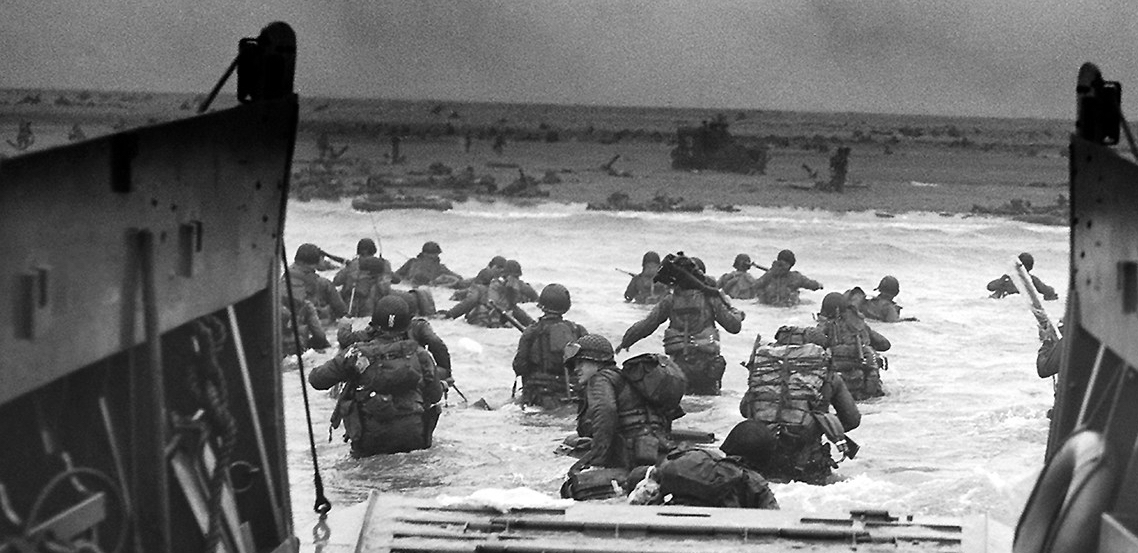

This magnificent painting depicts Color Sergeant William H. Cox, who served in World War I with the 15th New York Infantry Regiment. Renumbered as the 369th Infantry in March 1918, this legendary unit is known to history as the Harlem Hellfighters.
Serving under command of the French Army, the Hellfighters established a combat reputation second to none. Although their country and Army believed them unworthy, those Black Soldiers set a powerful example of devotion to duty that echoes across the many decades since they served.
While the men of the 369th faced rejection from their own Army, the French government needed every available soldier to man the trenches. Suffering horrendous casualties in the war, France already had thousands of Black colonial troops in service. While it would be an exaggeration to say the French Army greeted segregated U.S. units with open arms, the situation was much different than in the American Expeditionary Force.


I couldn’t locate much exact information about Color Sgt. Cox. It is possible that he had prior Army service when he joined the New York National Guard in July 1916. Searching his name in Ancestry.com proved a challenge. He may have passed away in April 1985, but that is a best guess based on multiple records with similar names.
One thing is without question. Color Sgt. Cox was a brave Soldier and won the French Croix de Guerre for gallantry in action. He was one of 170 members of the Harlem Hellfighters so honored by the French Army. Although confronted with the stark racism endemic to the World War I Army, he undoubtedly wore his decoration with pride.
The entire 369th Infantry Regiment received the Croix de Guerre as a unit award from the grateful French Army on December 13, 1918: 1
… [F]or its operations as a combat unit of a French division in the great offensive in Champagne, September and October 1918, by the French Commanding General. Under the command of Col. [William] Hayward, who, though injured, insisted on leading his regiment in the battle; of Lt. Col. [Woodell] Pickering, admirably cool and brave; of Maj. [Frederick] Cobb, killed, of Maj. [Lorillard] Spencer, grievously wounded, of Maj. [Arthur] Little, a true leader of men; the 369th [Infantry Regiment,] U.S., engaging in an offensive for the first time in the drive of September 1918, stormed powerful enemy positions energetically defended, took after heavy fighting the town of [Sechault,] captured prisoners and brought back six cannons and a great number of machine guns.

Retired Maj. Arthur Little served for two years as an officer with the Hellfighters. In 1936, he wrote: 2
A regiment of colored men–properly officered and properly organized–is a great regiment for fighting or for any other duty.
I recently read Maj. Little’s fine book, and his pride of service shone through the pages. In the forward, he wrote of the sacrifice and courage embodied by Color Sgt. Cox and his comrades of the Hellfighters. 3

Writing more than fifteen years after the end of World War I, Maj. Little recorded the fate of a group of Black Soldiers and their White officer who gave everything they had in pursuit of liberty: 4
During the night of September 27th [1918,] when [1st B]attalion was being so dreadfully cut up, [1st Lt.] Charley Dean attempted to gain a position of superiority with his platoon of machine gunners, in order to try and save the situation. Dean and his men advanced in extended line until they came to enemy wire. When they started to cut their way through the wire, the enemy heard them, and turned loose machine guns, already registered.
When searching parties went out four days later, 1st Lt. Dean and his platoon were found all together in perfect alignment, with faces toward the enemy and bodies hanging on the wire, all present–none to be accounted for–all present–dead!
Never forget, Mark
To learn more about the Harlem Hellfighters, please click the following links.
Medal of Honor recipient Sgt. Henry Johnson, 369th Infantry Regiment
Remembering the Harlem Hellfighters
African-American WWI ‘Harlem Hell Fighters’ proved their mettle, patriotism in combat
After 100 years the Harlem Hellfighters nickname is finally official
Notes:
- Croix de Guerre citation extracted from pages 80-81 of Complete History of Colored Soldiers in the World War, Bennett & Churchill, New York, 1919.
- Page xi, From Harlem to the Rhine; the Story of New York’s Colored Volunteers by Arthur W. Little, Covici and Friede Publishers, New York, 1939.
- Ibid, page xi.
- Ibid, pages 310-11
- The image of the Croix de Guerre and color sergeant stripes are both from Wikipedia.org.
